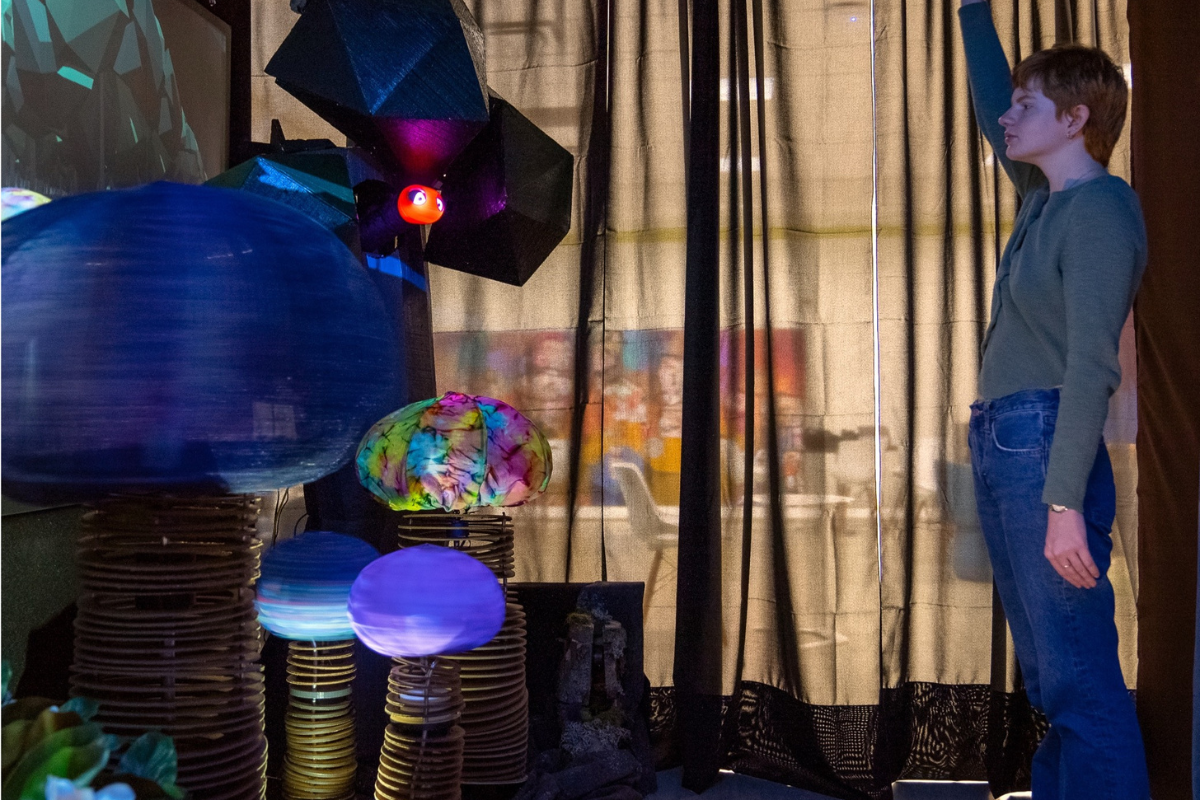
A participant experiences the “Raise Your Hand” interactive art exhibit. The exhibit is part of Electronic ARTrium, a Georgia Tech Vertically Integrated Project, led by Professor Mary Ann Weitnauer, which was recently recognized by the American Society for Engineering and Education.
Art has frequently proven to be a unifying force, drawing people together through its ability to ignite imagination and evoke powerful emotions. It can also offer a unique means of communicating complex scientific concepts to the public.
This is the inspiration that motivated Mary Ann Weitnauer to establish the Electronic ARTrium Vertically Integrated Projects (VIP) team. VIP is an education program that allows undergraduate and graduate students to earn academic credit for working with faculty on long-term, collaborative research projects.
In the scientific community, anything that stimulates creativity and forges collaboration can serve a purpose, according Weitnauer, a professor in the Georgia Tech School of Electrical and Computer Engineering. The willingness to explore new avenues of thought with people from a different discipline can lead to discoveries and advancements that push the boundaries of possibility.
“I wanted to do something that I’ve been dreaming about for a long time which is to combine art and electronics,” said Weitnauer. “A public art project like Electronic ARTrium attracts students from all majors and helps bridge across disciplines and courses.”
Electronic ARTrium’s first art installation, “Raise Your Hand,” was exhibited in the Ferst Center for the Arts from November 1-14, 2022. The interactive installation consisted of a combination of three kinds of original art — sound, mechatronics (the integration of mechanical, electrical, and electronic engineering systems), and video — that all responded to participant motion in a synchronized way. As participants navigated and engaged with the exhibit, elements were brought to life by sensors creating an immersive and synchronized display of artistic expression.
Award-Winning Multidisciplinary Collaboration
The "Raise Your Hand" project was recently honored by the American Society for Engineering and Education (ASEE) Conference, where it garnered two prestigious awards. It achieved the Best Paper Award in the Multidisciplinary Engineering Division and was also recognized with the esteemed Best Professional Interest Council (PIC) V Paper Award.
ASEE is comprised of five PICs, which serve as formal organizational structures to promote, encourage, and facilitate activities related to their respective areas of interest. By receiving these accolades, the "Raise Your Hand" paper secured a spot among the top five papers of the conference out of over 1,900 submissions.
The paper, “Lessons Learned While Managing ‘Raise Your Hand,’ a Multidisciplinary Collaboration Between Engineering and the Arts,” details the project’s valuable insights for integrating engineering and the arts in experiential, project-based learning contexts. It also discusses the challenges faced, resources utilized, and provides recommendations for facilitating successful collaborations between different disciplines.
“There’s a growing demand for projects at this intersection, which was apparent by the number of students who interacted with the exhibit,” said Jacki Rohde, an assessment coordinator in ECE who co-wrote the paper. “It presents an opportunity for students of all backgrounds and disciplines to connect with a sense of wonder and love of stories, making it a really engaging experience.”
(text and background only visible when logged in)
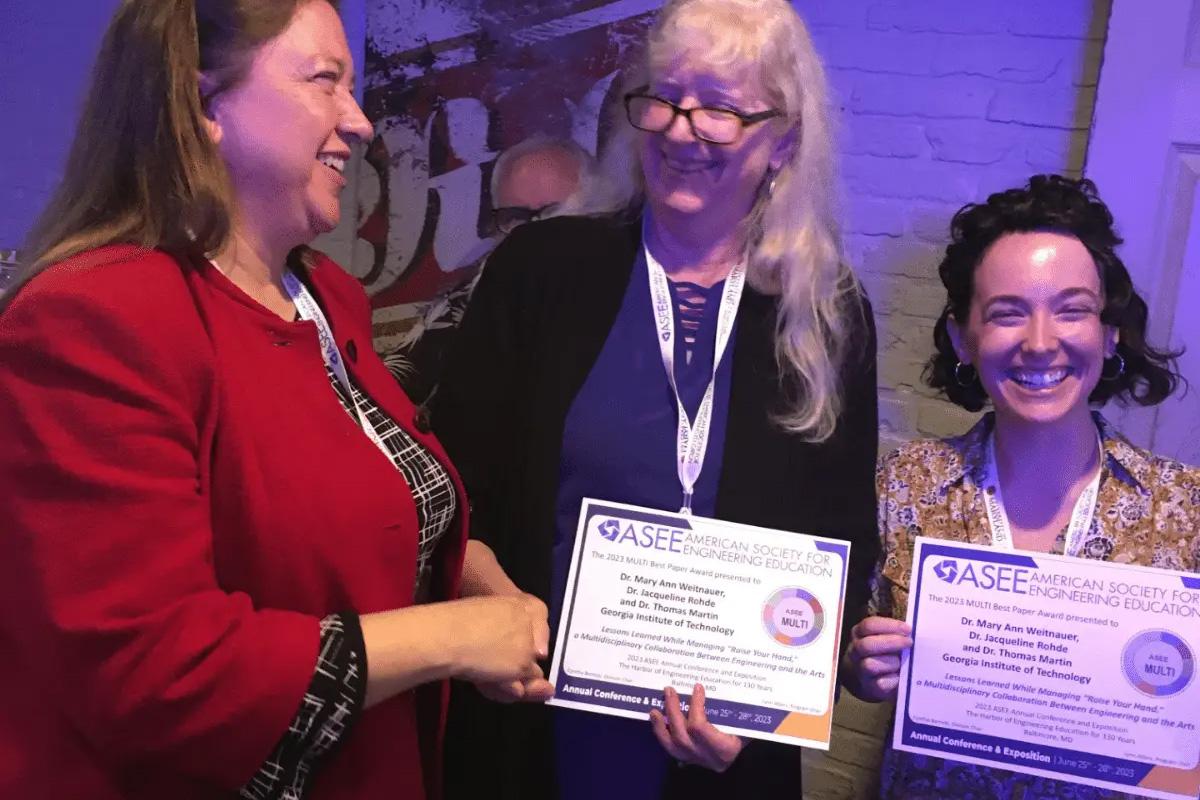
Professor Mary Ann Weitnauer (middle) and ECE assessment coordinator Jacki Rohde (right) receiving the Best Paper Awards at this year’s American Society for Engineering and Education (ASEE) Conference.
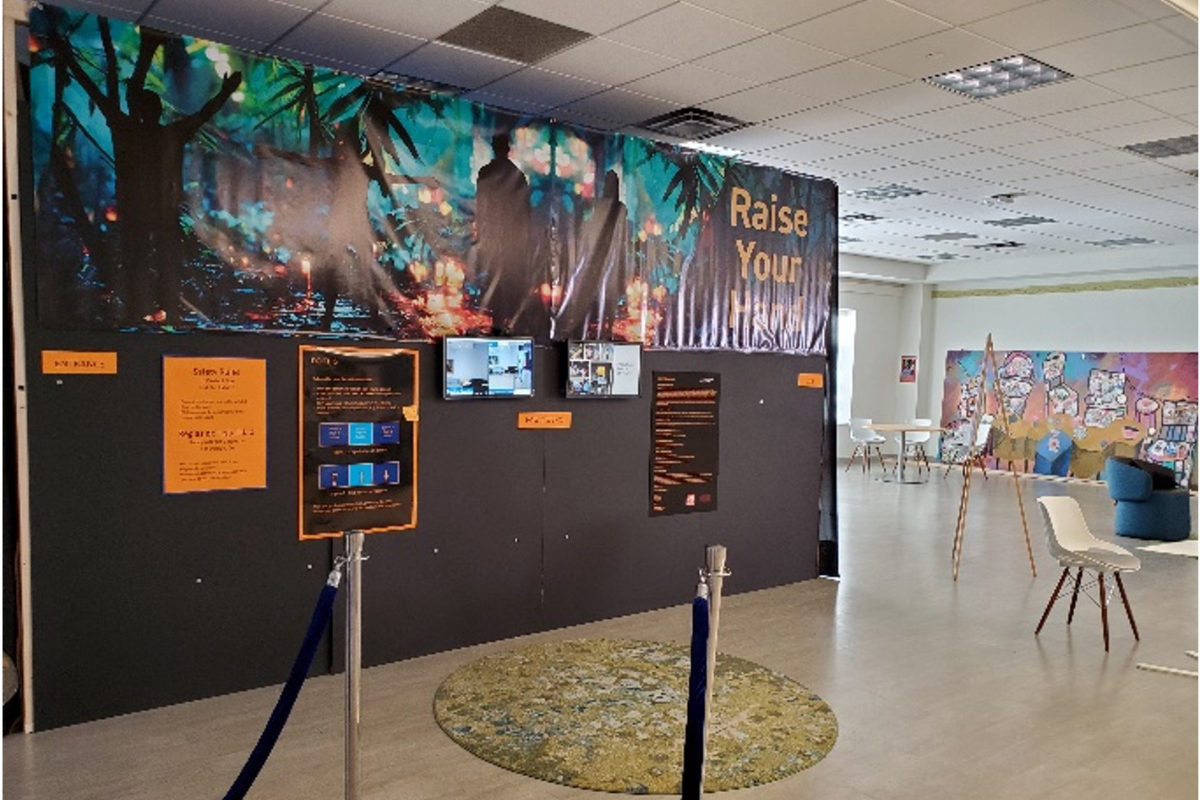
The exterior of the "Raise Your Hand" exhibit on display at the Ferst Center for the Arts at Georgia Tech.
Interdisciplinary Teaching Strategies
Representing a diverse array of undergraduate majors, the Electronic ARTrium project’s team comprised of students from computer engineering, computer science, electrical engineering, industrial design, mechanical engineering, literature, media and communication, computational media, and music technology. It represented four courses through which students could participate including, VIP, Interdisciplinary Capstone Design, ECE Single-Semester Capstone Design, and Undergraduate Research.
The project brought together faculty members from three different schools (Alex Cohen in the School of Music, Noah Posner in the School of Industrial Design, and Rohde in ECE), as well as experts from the Georgia Tech Research Institute (GTRI). In addition, five industry mentors from L3Harris, a defense and commercial technologies company, enriched the collaborative atmosphere, fostering a real-world perspective.
The project also went beyond the boundaries of higher education, reaching out to a younger generation. Two high-school students from the B.E.S.T Academy and the Coretta Scott King Young Women's Leadership Academy participated in the project. The students participated through Project ENGAGES, a program developed by Georgia Tech and several minority-serving public high schools in Atlanta aimed to ignite a passion for engineering and science learning.
Coordinating the numerous moving parts across diverse disciplines presented a significant challenge for Weitnauer. “Raise Your Hand,” with its ambitious goal of combining art and electronics in an interactive exhibit, needed to employ a myriad of teaching strategies to navigate this complexity and create a truly immersive and collaborative learning experience.
Some strategies included were:
-
The "Rapid and Quiet" Brainstorming Technique effectively allowed 22 VIP students to choose an overall exhibit concept through a voting process in one hour.
-
Collaboration between Senior Capstone and VIP teams enabled knowledge exchange, fostering a spirit of camaraderie and shared learning.
-
The Effective Team Dynamics Activities, developed by Professor Mary Lynn Realff in the School of Materials Science and Engineering was utilized to facilitate open communication and understanding among disciplinary sub-teams.
-
Involvement in non-disciplinary activities, like the physical building of the exhibition, encouraged interdisciplinary interaction and practical skill development.
-
A succinct presentation template, designed by Tom Martin, a chief scientist, in GTRI's Electro-Optical Systems Laboratory, based on his many years as an executive at L3Harris, was used by each disciplinary sub-team to communicate the status of their projects to the other disciplinary sub-teams.
Electric ARTrium Turns to Multimedia Games
Like all VIP projects, the journey for Electric ARTrium is ongoing. Now the team is gearing up for the next project: an interactive four-part, life-sized video game with mechatronics scheduled for the Fall 2024 semester.
The exhibit’s game, which is focused on helping a lost young bee find its way back home, will incorporate pointing direction recognition, custom Blender-created characters, and mechatronic narrators. Weitnauer hopes the fun and engaging exhibit will draw an audience from all over Atlanta.
“As Electric ARTrium continues to evolve, I'm excited to see how each new group of students, with their different disciplinary backgrounds and ideas, will work together to explore new ways to engage, entertain, and inspire through multimedia art,” she said.
Related Articles
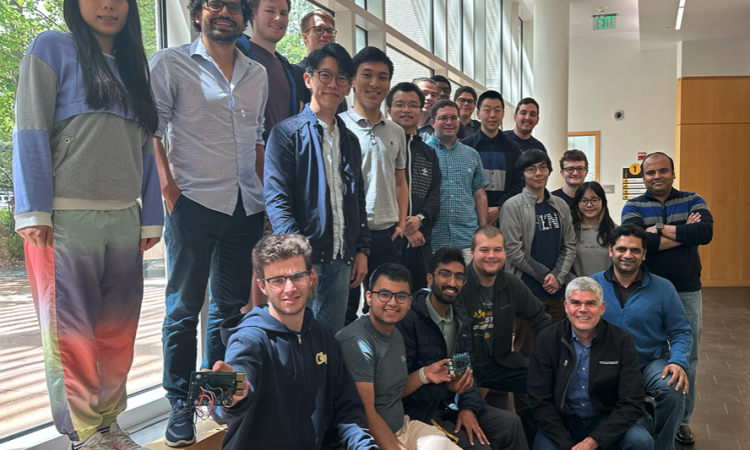
Collaboration with Apple Paves the Way for Future Chip Development Courses
ECE and Apple have developed a novel course to meet the growing demand for skilled engineers in chip manufacturing.
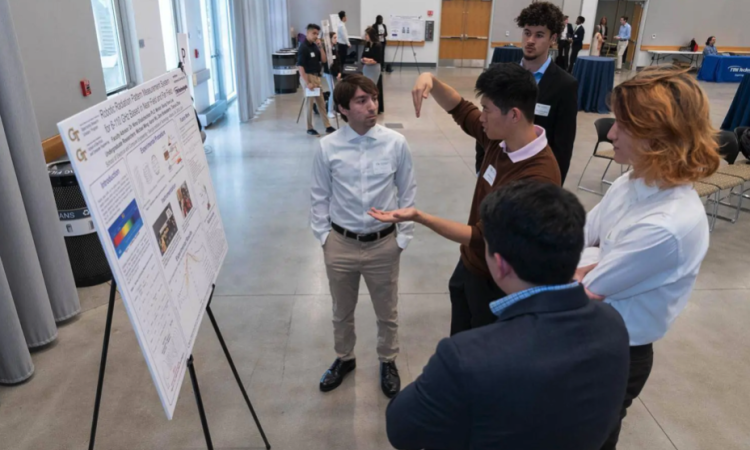
Undergrad Research Excellence on Display at ORS Symposium
ECE's Opportunity Research Scholar's (ORS) Symposium showcases the exceptional research conducted by undergraduate students throughout the academic year.
(text and background only visible when logged in)